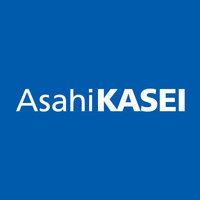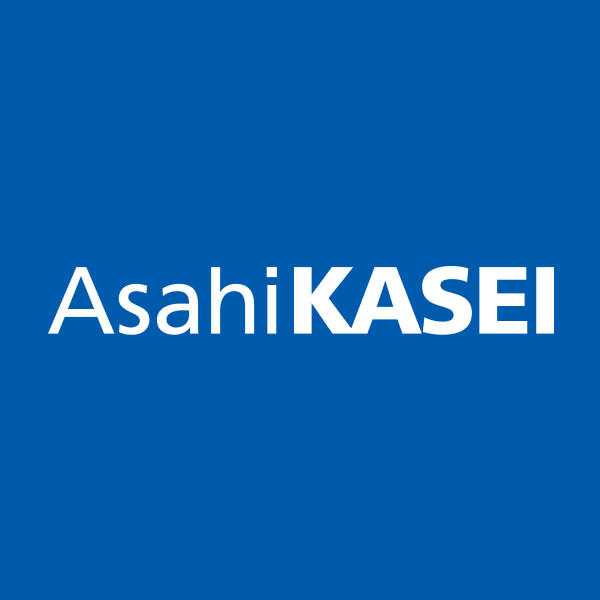
Asahi Kasei Corp
TSE:3407


| US |

|
Johnson & Johnson
NYSE:JNJ
|
Pharmaceuticals
|
| US |

|
Berkshire Hathaway Inc
NYSE:BRK.A
|
Financial Services
|
| US |

|
Bank of America Corp
NYSE:BAC
|
Banking
|
| US |

|
Mastercard Inc
NYSE:MA
|
Technology
|
| US |

|
UnitedHealth Group Inc
NYSE:UNH
|
Health Care
|
| US |

|
Exxon Mobil Corp
NYSE:XOM
|
Energy
|
| US |

|
Pfizer Inc
NYSE:PFE
|
Pharmaceuticals
|
| US |

|
Palantir Technologies Inc
NYSE:PLTR
|
Technology
|
| US |

|
Nike Inc
NYSE:NKE
|
Textiles, Apparel & Luxury Goods
|
| US |

|
Visa Inc
NYSE:V
|
Technology
|
| CN |

|
Alibaba Group Holding Ltd
NYSE:BABA
|
Retail
|
| US |

|
3M Co
NYSE:MMM
|
Industrial Conglomerates
|
| US |

|
JPMorgan Chase & Co
NYSE:JPM
|
Banking
|
| US |

|
Coca-Cola Co
NYSE:KO
|
Beverages
|
| US |

|
Walmart Inc
NYSE:WMT
|
Retail
|
| US |

|
Verizon Communications Inc
NYSE:VZ
|
Telecommunication
|
Utilize notes to systematically review your investment decisions. By reflecting on past outcomes, you can discern effective strategies and identify those that underperformed. This continuous feedback loop enables you to adapt and refine your approach, optimizing for future success.
Each note serves as a learning point, offering insights into your decision-making processes. Over time, you'll accumulate a personalized database of knowledge, enhancing your ability to make informed decisions quickly and effectively.
With a comprehensive record of your investment history at your fingertips, you can compare current opportunities against past experiences. This not only bolsters your confidence but also ensures that each decision is grounded in a well-documented rationale.
Do you really want to delete this note?
This action cannot be undone.

| 52 Week Range |
905.3
1 147
|
| Price Target |
|
We'll email you a reminder when the closing price reaches JPY.
Choose the stock you wish to monitor with a price alert.

|
Johnson & Johnson
NYSE:JNJ
|
US |

|
Berkshire Hathaway Inc
NYSE:BRK.A
|
US |

|
Bank of America Corp
NYSE:BAC
|
US |

|
Mastercard Inc
NYSE:MA
|
US |

|
UnitedHealth Group Inc
NYSE:UNH
|
US |

|
Exxon Mobil Corp
NYSE:XOM
|
US |

|
Pfizer Inc
NYSE:PFE
|
US |

|
Palantir Technologies Inc
NYSE:PLTR
|
US |

|
Nike Inc
NYSE:NKE
|
US |

|
Visa Inc
NYSE:V
|
US |

|
Alibaba Group Holding Ltd
NYSE:BABA
|
CN |

|
3M Co
NYSE:MMM
|
US |

|
JPMorgan Chase & Co
NYSE:JPM
|
US |

|
Coca-Cola Co
NYSE:KO
|
US |

|
Walmart Inc
NYSE:WMT
|
US |

|
Verizon Communications Inc
NYSE:VZ
|
US |
This alert will be permanently deleted.
 Asahi Kasei Corp
Asahi Kasei Corp
Asahi Kasei Corp
Investor Relations
Asahi Kasei Corp., a Japanese multinational, stands as a testament to innovation's power in the ever-evolving landscape of global business. Founded in 1922, originally as a producer of ammonia and chemical fertilizers, the company’s transformation mirrors the dynamic nature of the industries it serves. Today, Asahi Kasei has grown into a diversified conglomerate, thriving across three main sectors: Material, Homes, and Health Care. This structure embodies a strategic balance, where the stability of each business unit fuels the corporation's capacity to withstand economic cycles and explore new horizons. The Material division, for instance, pushes forward with developments in fibers, chemicals, and electronics, serving industries that range from automotive to consumer electronics. This segment underscores the company’s commitment to innovation and its pivotal role in the supply chain of numerous essential products.
Parallel to its industrial prowess, Asahi Kasei’s Homes sector solidifies its presence in the housing and construction arena, primarily within Japan. The division leans on novel building materials and technologies that deliver eco-friendly and durable living spaces, aligning with contemporary urban development trends. Meanwhile, the Health Care division reflects the company's adaptability as it caters to growing global needs with its production of pharmaceuticals, medical devices, and related health solutions. This diversification is not just a strategy of risk management but an intricate tapestry where each piece complements the others, forming a robust economic mosaic. Asahi Kasei, thus, maintains its relevance and resilience, by not only satisfying immediate market demands but also by positioning itself at the forefront of sustainable innovation and growth.

Asahi Kasei Corp., a Japanese multinational, stands as a testament to innovation's power in the ever-evolving landscape of global business. Founded in 1922, originally as a producer of ammonia and chemical fertilizers, the company’s transformation mirrors the dynamic nature of the industries it serves. Today, Asahi Kasei has grown into a diversified conglomerate, thriving across three main sectors: Material, Homes, and Health Care. This structure embodies a strategic balance, where the stability of each business unit fuels the corporation's capacity to withstand economic cycles and explore new horizons. The Material division, for instance, pushes forward with developments in fibers, chemicals, and electronics, serving industries that range from automotive to consumer electronics. This segment underscores the company’s commitment to innovation and its pivotal role in the supply chain of numerous essential products.
Parallel to its industrial prowess, Asahi Kasei’s Homes sector solidifies its presence in the housing and construction arena, primarily within Japan. The division leans on novel building materials and technologies that deliver eco-friendly and durable living spaces, aligning with contemporary urban development trends. Meanwhile, the Health Care division reflects the company's adaptability as it caters to growing global needs with its production of pharmaceuticals, medical devices, and related health solutions. This diversification is not just a strategy of risk management but an intricate tapestry where each piece complements the others, forming a robust economic mosaic. Asahi Kasei, thus, maintains its relevance and resilience, by not only satisfying immediate market demands but also by positioning itself at the forefront of sustainable innovation and growth.





























 You don't have any saved screeners yet
You don't have any saved screeners yet
